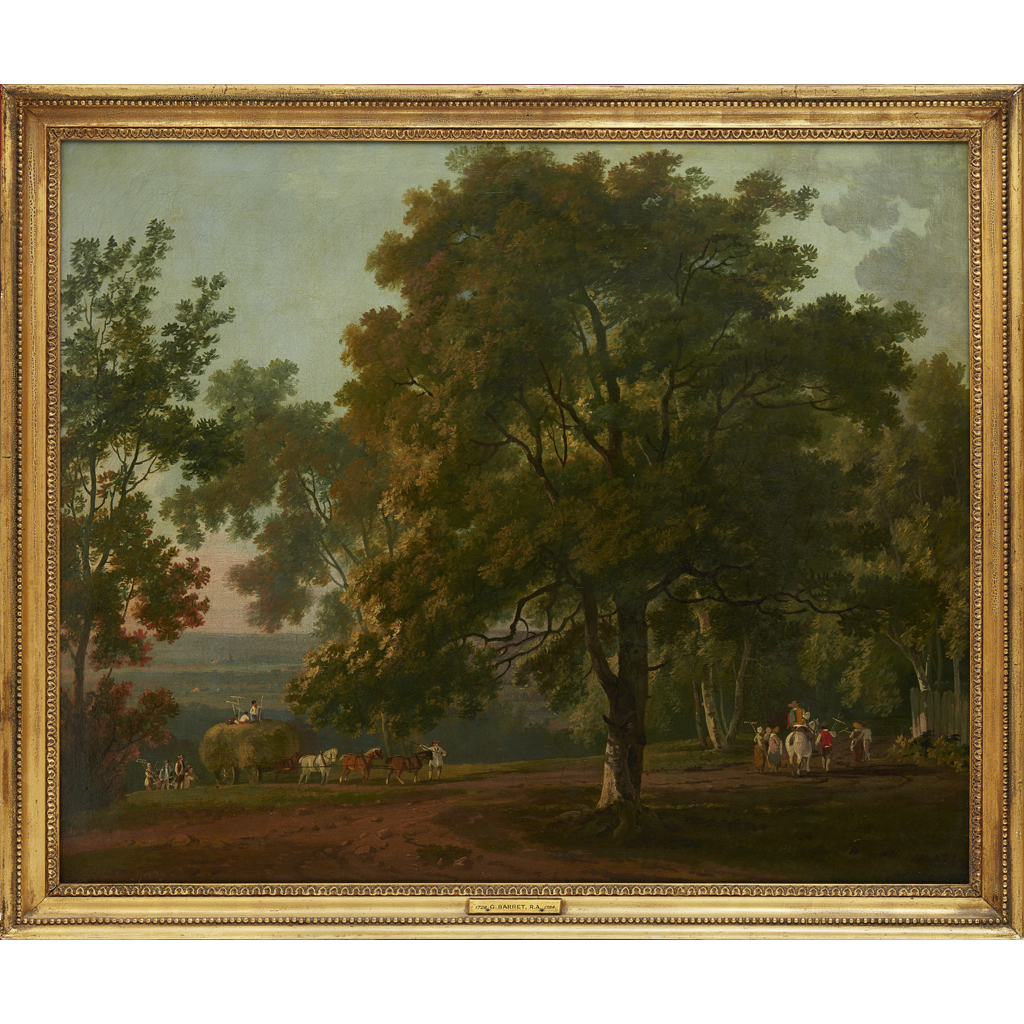GEORGE BARRETT SENIOR R.A. (IRISH, 1730-1784)
WOODLAND LANDSCAPE WITH PEASANTS MAKING HAY
£12,500
Auction: 22 November 2017 at 11:00 GMT
Description
Oil on canvas
Dimensions
63.5cm x 76cm (25in x 30in)
Footnote
Note: George Barratt was one of the most distinguished landscape artists of the 18th century, and certainly among the most successful of his peers.
The exact date of his birth is disputed, but Barratt was born in Ireland c.1728-32, the son of a clothier. He learnt his craft in Dublin, and developed the initial contacts that would set him in good stead for the rest of his career. Perhaps the most influential of these early relationships was his close friendship with Edmund Burke who was at that point studying at Trinity College. Burke became a prominent political theorist and philosopher, but is known in art historical circles for his 1757 publication 'A Philosophical Enquiry into the Origin of Our Ideas of the Sublime and Beautiful', a treatise on aesthetics that was to have a wide influence; articulating the transition from the Neo-Classical to the Romantic era. The influence of Burke's thinking can be detected in some of Barret's paintings, which had a greater tendency towards wild and natural landscapes than many of his contemporaries.
Upon moving to London in 1762, Barratt found rapid success and was supported by various prominent patrons, including the Duke of Portland, the Duke of Buccleuch, and the Earl of Albermarle. In an era that saw many members of the gentry acquiring or designing new estates, Barratt saw himself well-placed to assist with their decoration, and had a handsome income relative to many of his peers as a result.
Barratt, described as 'well-informed, an enthusiast in his art, and a delightful companion,' was also an influential figure in artistic circles. In 1768 a rift developed in the Society of Artists of Great Britain. A faction led by Sir William Chambers, at the suggestion of Barret, petitioned the King for the foundation of the Royal Academy. Barret is mentioned as a nominated member in the foundation document, and appears in Zoffany's picture of 'The Royal Academy in 1773,' now in the Royal collection.
Though it would appear that Barratt never travelled to Italy, he was very well versed in the British countryside, and his subject matter featured landscapes as diverse as Wales, the Isle of Wight, and Scotland. Landscapes made up to over a third of his known output. Despite his significant commercial success, Barratt was apparently "feckless" with money, and found himself in difficulties in the latter years of his life. On Burke's recommendation he obtained the appointment of master painter of Chelsea Hospital, a post he held until his death in 1784. At the time of his death his widow and children were left destitute, but the Royal Academy granted her a pension of thirty pounds a year.

